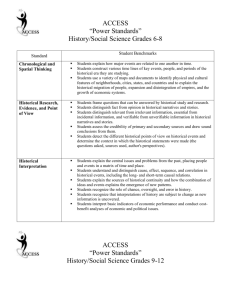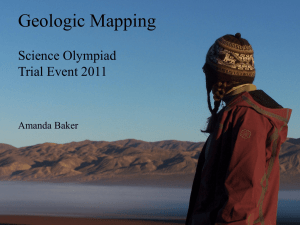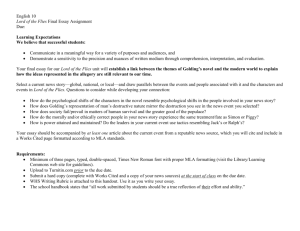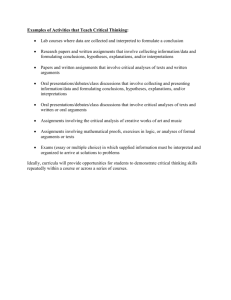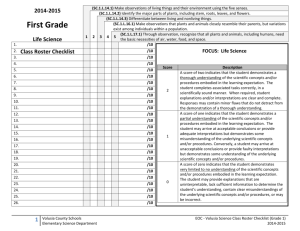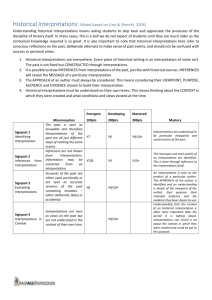Albion Geology Taking Field Notes Handout
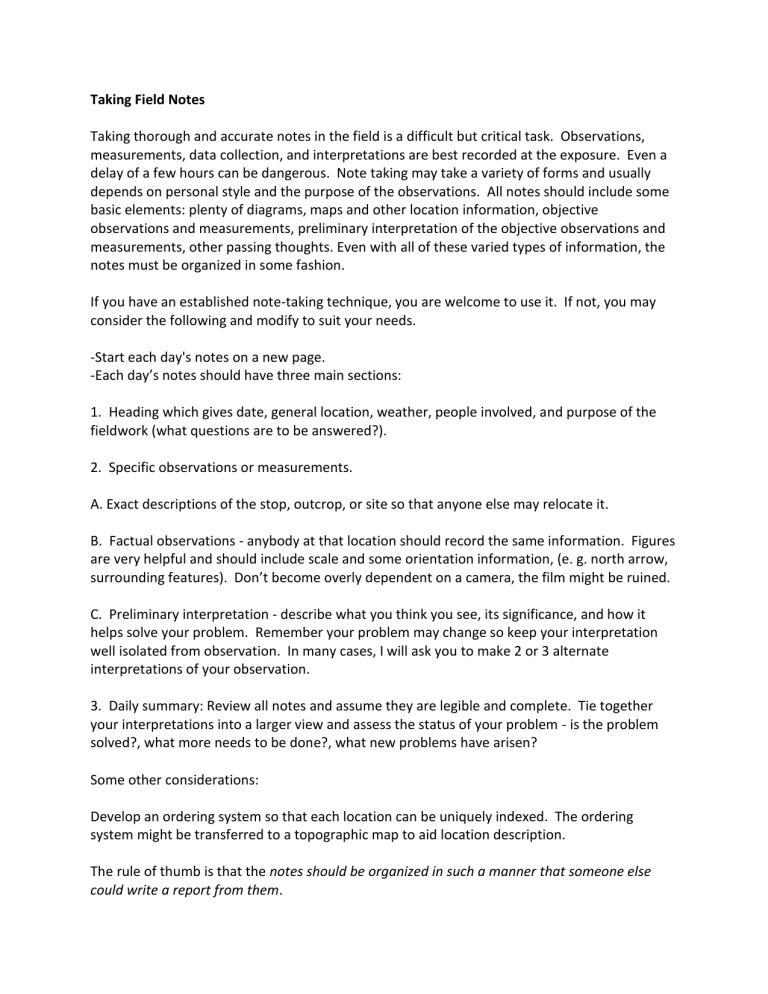
Taking Field Notes
Taking thorough and accurate notes in the field is a difficult but critical task. Observations, measurements, data collection, and interpretations are best recorded at the exposure. Even a delay of a few hours can be dangerous. Note taking may take a variety of forms and usually depends on personal style and the purpose of the observations. All notes should include some basic elements: plenty of diagrams, maps and other location information, objective observations and measurements, preliminary interpretation of the objective observations and measurements, other passing thoughts. Even with all of these varied types of information, the notes must be organized in some fashion.
If you have an established note-taking technique, you are welcome to use it. If not, you may consider the following and modify to suit your needs.
-Start each day's notes on a new page.
-Each day’s notes should have three main sections:
1. Heading which gives date, general location, weather, people involved, and purpose of the fieldwork (what questions are to be answered?).
2. Specific observations or measurements.
A. Exact descriptions of the stop, outcrop, or site so that anyone else may relocate it.
B. Factual observations - anybody at that location should record the same information. Figures are very helpful and should include scale and some orientation information, (e. g. north arrow, surrounding features). Don’t become overly dependent on a camera, the film might be ruined.
C. Preliminary interpretation - describe what you think you see, its significance, and how it helps solve your problem. Remember your problem may change so keep your interpretation well isolated from observation. In many cases, I will ask you to make 2 or 3 alternate interpretations of your observation.
3. Daily summary: Review all notes and assume they are legible and complete. Tie together your interpretations into a larger view and assess the status of your problem - is the problem solved?, what more needs to be done?, what new problems have arisen?
Some other considerations:
Develop an ordering system so that each location can be uniquely indexed. The ordering system might be transferred to a topographic map to aid location description.
The rule of thumb is that the notes should be organized in such a manner that someone else
could write a report from them.
The development of objective observational and recording skills is a critical part of any investigation. It requires a lot of work but your entire field effort is wasted unless your notes contain detailed and organized information. Just ask someone who has lost a field notebook and was required to repeat a field season to complete the project
Albion Geology Field Notes Assessment Rubric
Taking thorough and accurate notes in the field is a difficult but critical task in geology.
Observations, measurements, data collection, and interpretations are best recorded at the exposure. This rubric is designed to be used to assess field note-taking by students who are making independent geological observations or collecting original data in the field. The five point rating scale is not linked directly to the grading of the field notebooks, although there is a some correlation. Our goal is that prior to field camp students should be taking notes at satisfactory level.
Rating Description
0 = unacceptable student-level notes
1 = weak student-level notes
2 = satisfactory student-level notes
3 = strong student-level notes
4 = professionallevel notes
Notes are illegible and incomplete. Basic site information (location, date, time, weather, purpose) is very weak or absent. Key observations and sketches are critically flawed. No interpretations/hypotheses or confusion of observations and interpretations. Notes are flawed and would not be useful to other geologists who have not visited the site.
Notes are mostly legible but lack organization and consistency. Site information
(location, date, time, weather, purpose) is weak and lacking important points.
Key observations and sketches are lacking important information or clarity.
Interpretations/hypotheses are weak and may be confused with observations.
Notes are lacking in multiple areas and would be only marginally useful to other geologists who have not visited the site.
Notes are legible and moderately organized. Site information (location, date, time, weather, purpose) is acceptable but not complete. Key observations are included but detail could be improved. Sketches of site, exposure(s), and features are included but could be improved in clarity, labeling or scale.
Interpretations/hypotheses are included but are not well supported by observations. Notes lack detail but would still be useful to other geologists who have not visited the site.
Notes are legible and reasonably well-organized. Site information is complete
(location, date, time, weather, purpose). Observations are appropriate to exposure or site and are mostly thorough. Sketches of site, exposure(s), and features are clear and have appropriate labels, directional indicators. and scale.
Interpretations/hypotheses are included and supported by observations. Notes would be clear and useful to other geologists who have not visited the site.
Professional level. Notes are legible and well-organized. Site information and observations are detailed and complete. Thoughtful and, in some cases, multiple interpretations/hypotheses are included in notes and clearly separated from factual observations. Notes would be very clear and useful to other geologists who have not visited the site.
